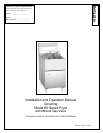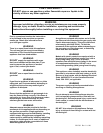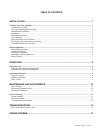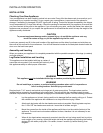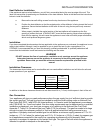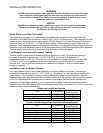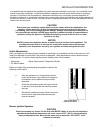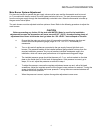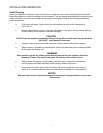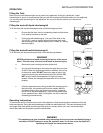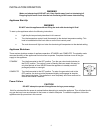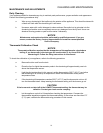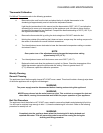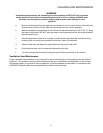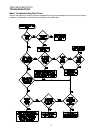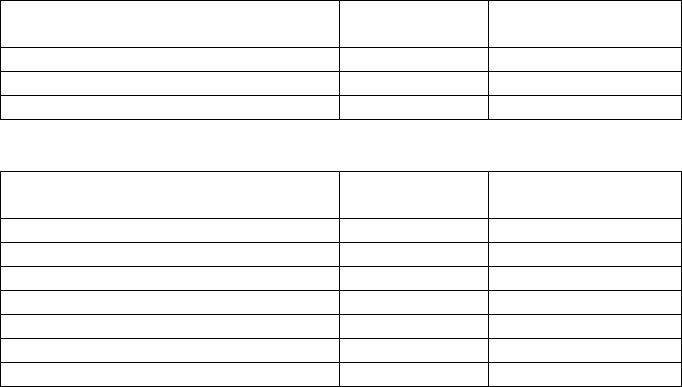
INSTALLATION/OPERATION
3
WARNING
NEVER supply the appliance with a gas other than the one that is indicated on the data
plate. Using the incorrect gas type will cause improper operation and could result in
serious injury or death. If you need to convert the appliance to another type of fuel,
contact the dealer you purchased it from.
NOTICE
NEVER use an adaptor to make a smaller gas supply line fit the appliance connection.
This may not allow proper gas flow for optimum burner operation, resulting in poor
performance and improper operation.
Quick Disconnect Gas Connection
Gas appliances equipped with casters must be installed with connectors that comply with the
Standard for Movable Gas Appliances, ANSI Z21.69 • CSA 6.16 latest edition. This connection should
include a quick disconnect device that complies with the Standard for Quick Disconnect Devices for
Use With Gas Fuel, ANSI Z21.41 • CSA 6.9 latest edition. When installing a quick disconnect you
must also install adequate means for limiting the movement of the appliance without depending on the
connector and quick-disconnect device or its associated piping to limit the movement of the appliance.
The restraining device should be attached to the appliance on the back panel.
Fuel Supply Line Leak and Pressure Testing
The fuel supply system must be tested before the appliance is used. If the fuel line is going to
be tested at a pressure greater than ½ PISG (3.45 kPa), insure that that appliance is
disconnected from the fuel line. If the fuel line is to be tested at a pressure equal to or less than
½ PSIG (3.45 kPa), the appliance can be connected during the test, but the unit’s gas valve
must be shut. Test all gas line connections for leaks with a solution of soap and water when
pressure is applied.
Ventilation and Fire Safety Systems
Your new appliance must have proper ventilation to function safely and properly. Exhaust gas
temperatures can reach as high as 1100 °F (593 °C). Therefore, it is very important to install a fire
safety system. Your ventilation system should be designed to allow for easy cleaning. Frequent
cleaning and proper maintenance of the ventilation system and the appliance will reduce the chances
of fire. The following tables contain a list of reference documents that will provide guidance on
ventilation and fire safety systems. It is not necessarily complete. Additional information can be
obtained from CSA International, 8501 East Pleasant Valley Road, Cleveland, OH, 44131 or visit their
website at www.csa-international.org
.
Hoods and Ventilation Systems
TOPIC UL Document
National Fuel Gas
Code Document
Exhaust Hoods ANSI/UL 70 ANSI/NFPA 96
Power Ventilators ANSI/UL 705 ANSI/NFPA 96
Filter Units ANSI/UL 900 ANSI/NFPA 96
Types of Fire Extinguishers and Detection Equipment
Topic UL Document
National Fuel Gas
Code Document
CO
2
Type Extinguishers ANSI/UL 154 ANSI/NFPA 12
Dry Chemical Type Extinguishers ANSI/UL 299 ANSI/NFPA 17
Water Type Extinguishers ANSI/UL 626 ANSI/NFPA 13
Foam Type Extinguishers ANSI/UL 8 ANSI/NFPA 11
Sprinklers ANSI/UL 199 ANSI/NFPA 13
Smoke Detectors ANSI/UL 268 ANSI/NFPA 72
Fire Detection Thermostats ANSI/UL 521 ANSI/NFPA 72



